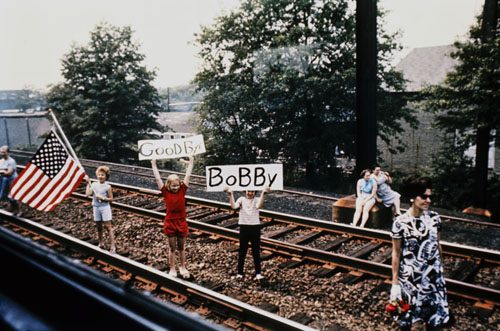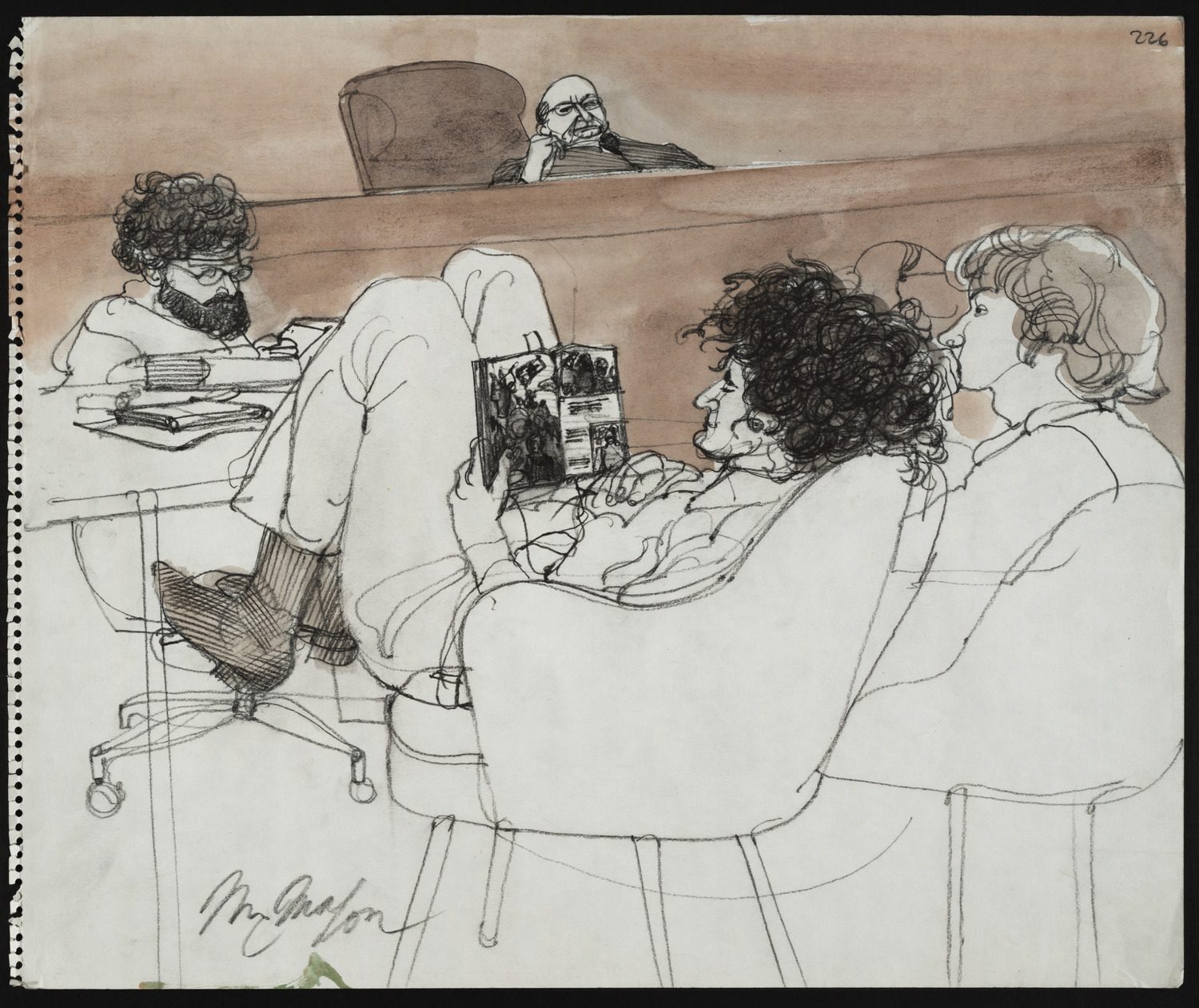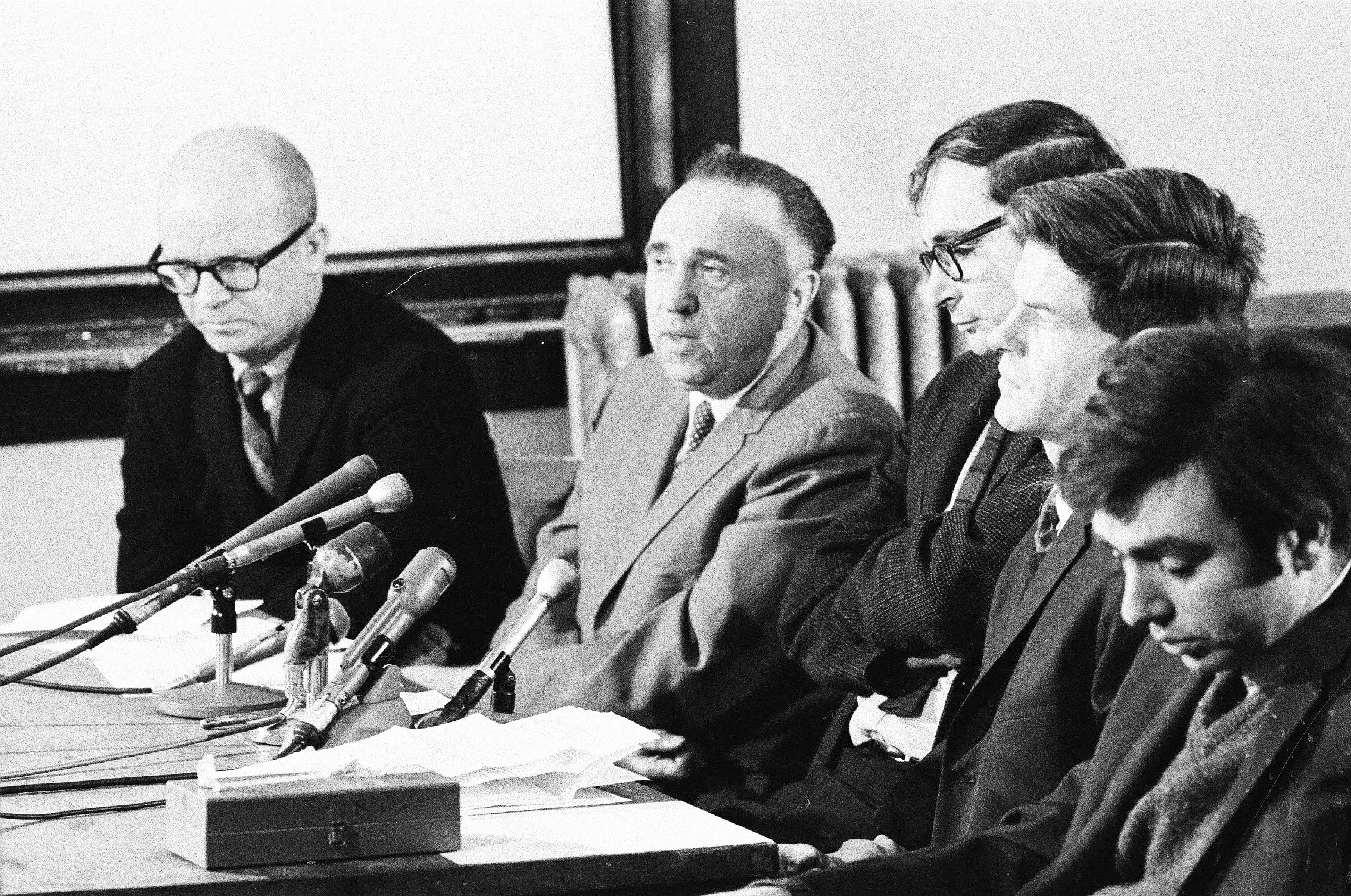In this blog post, editor and content manager Heidi Samuelson looks at the 1971 Mayday Protest and anti-Vietnam war actions in Chicago in advance of the opening of Designing for Change: Chicago Protest Art of the 1960s–70s.
The Vietnam War sparked a massive antiwar protest movement throughout the United States beginning with demonstrations in the mid-1960s. Chicago became a major center of antiwar activity during this time. Perhaps most notable were the protests prior to and during the 1968 Democratic National Convention. These protests led to a federal investigation, and eight demonstrators (known as the Chicago Eight, later Seven) were famously charged with conspiring to use interstate commerce with intent to incite a riot.
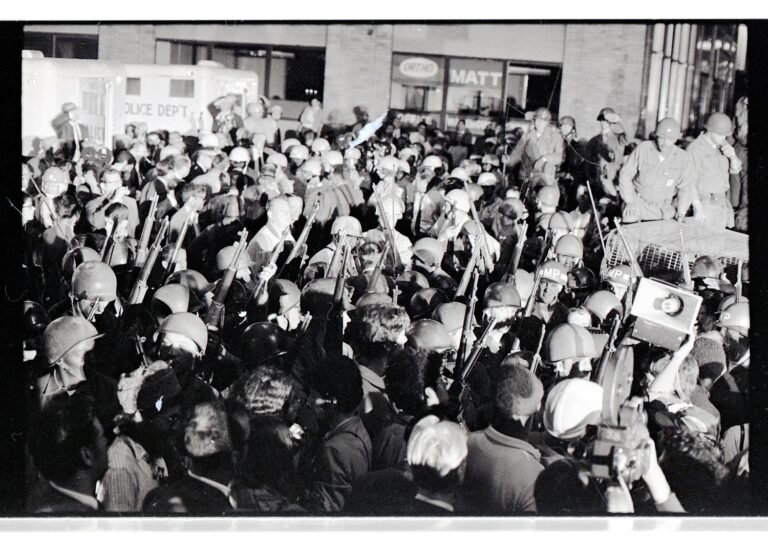
Demonstrators confront the National Guard during Democratic National Convention, Chicago, August 1968. ST-17100140-0003, Chicago Sun-Times collection, CHM
Although one of the leading student activist groups that focused on antiwar actions, the Students for a Democratic Society (SDS), had split by 1969, the antiwar movement continued into the 1970s. Opposition to the war escalated after the Nixon administration ordered US ground troops to invade Cambodia on April 28, 1970. On May 4, 1970, four students at an anti-Vietnam War rally at Kent State University in Kent, Ohio, were shot and killed by National Guardsmen. The following day in Chicago, thousands of people, primarily university students, filled Grant Park in protest.
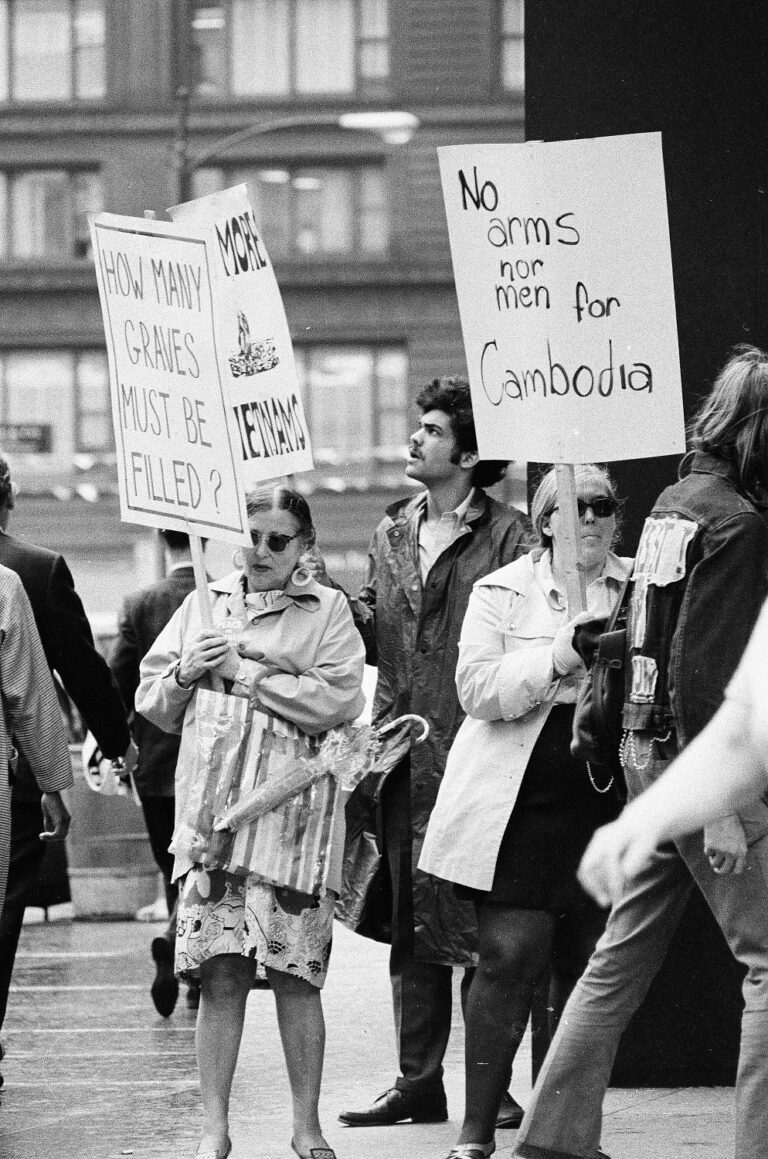
Women for Peace gather at the Federal Building, 219 South Dearborn Street, Chicago, before a march begins in protest the Kent State University student deaths and American action in Cambodia. The march began at the Federal Building and ended at the General John A. Logan statue in Grant Park. ST-10003874-0011, Chicago Sun-Times collection, CHM
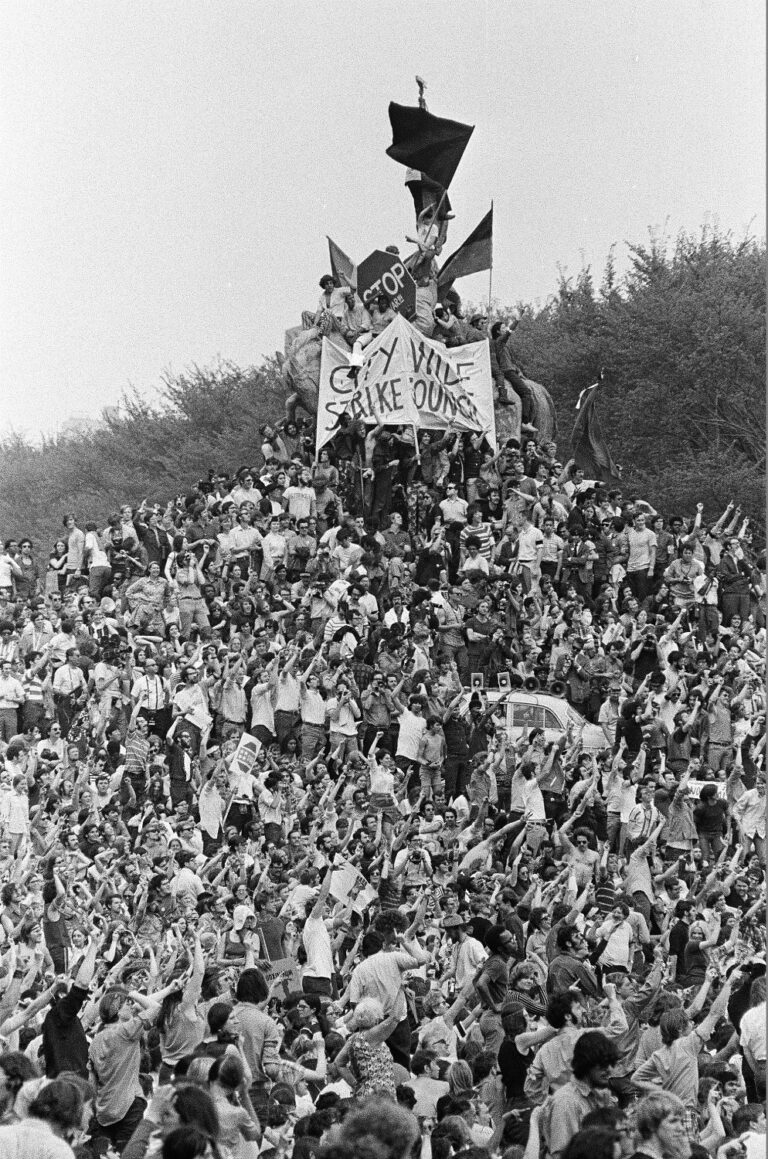
Following the Kent State shootings, students gathered in Grant Park around the John Alexander Logan Monument in protest of the Kent State University shootings and the Vietnam War, ST-14002662-0004, Chicago Sun-Times collection, CHM
A year later in 1971, the activist landscape was fractured, but May 1 still saw the largest act of civil disobedience in US history—as well as the largest mass arrest. Known as the Mayday Protest, the plan was, simply, to shut down the federal government. Under the slogan “If the government won’t stop the war, we’ll stop the government,” organizers detailed in advance 21 bridges and traffic circles in Washington, DC, for protesters to block nonviolently with vehicles, makeshift barricades, or their bodies. The immediate goal was to prevent government employees from getting to their jobs, but the larger aim was, as stated in the Mayday Tactical Manual, “to create the spectre of social chaos while maintaining the support or at least toleration of the broad masses of American people.”
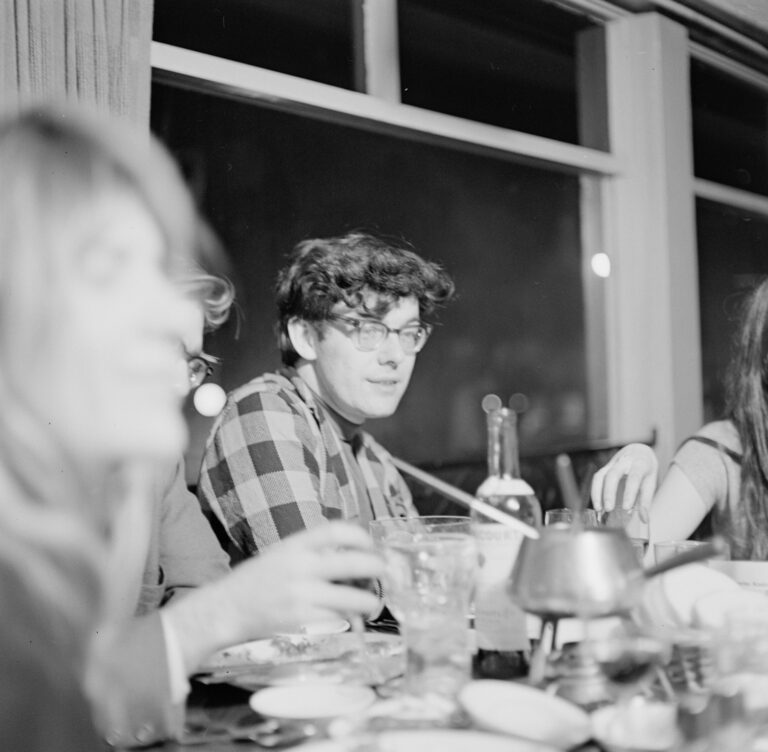
Rennie Davis celebrating release of Chicago Seven at Harper Court Restaurant, Chicago, 1969. Photographed for essay in Scanlan’s Magazine. CHM, ICHi-175702; Stephen Deutch, photographer
One of the organizers of the action was Rennie Davis, one of the Chicago Seven, who took the idea of a nonviolent blockade from a failed attempt of the Brooklyn Chapter of the Congress of Racial Equality (CORE) to stop traffic on the opening day of the 1964 New York World’s Fair. Unlike many organized actions, the Mayday Protest had a decentralized structure. Rather than taking orders from leaders, tactics were shared among different “regions” of the planned action and were followed by small affinity groups.
The protest was supported by the Chicago Seed. Established as a collective in 1967, the Seed started as a newspaper about local counterculture. But police action at the 1968 Democratic National Convention radicalized the staff, and they began to focus on more serious issues, particularly the Vietnam War. At its height, the Chicago Seed, which could be purchased for 35 cents at newsstands, reached 30,000–40,000 readers, making it one of the nation’s most widely circulated and influential underground newspapers before it ceased operations in 1974.
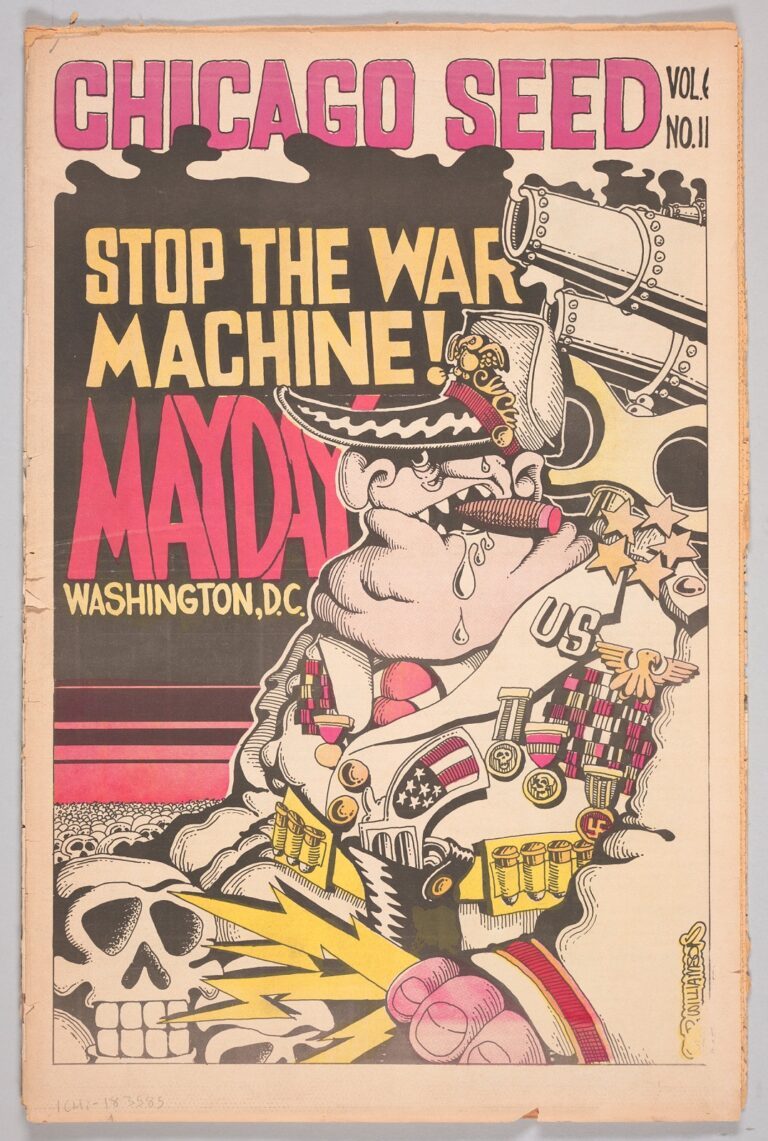
The cover of Chicago Seed, vol. 6, no. 11, “Stop the War Machine” by the underground cartoonist Mervyn “Skip” Williamson, was designed to rally support for the 1971 Mayday Protests in Washington, DC. CHM, ICHi-183585; Skip Williamson, artist
Ultimately, the Mayday Protests weren’t widely considered a success. Many of the planned blockades only held for a short time, and in some cases, protesters were arrested en masse before they even got to the blockades. However, the sheer size of the action did send a message to the Nixon administration, which, according to CIA director Richard Helms (quoted in Tom Wells’s The War Within: America’s Battle over Vietnam) was “one of the things that was putting increasing pressure on the administration to try and find some way to get out of the war.”
